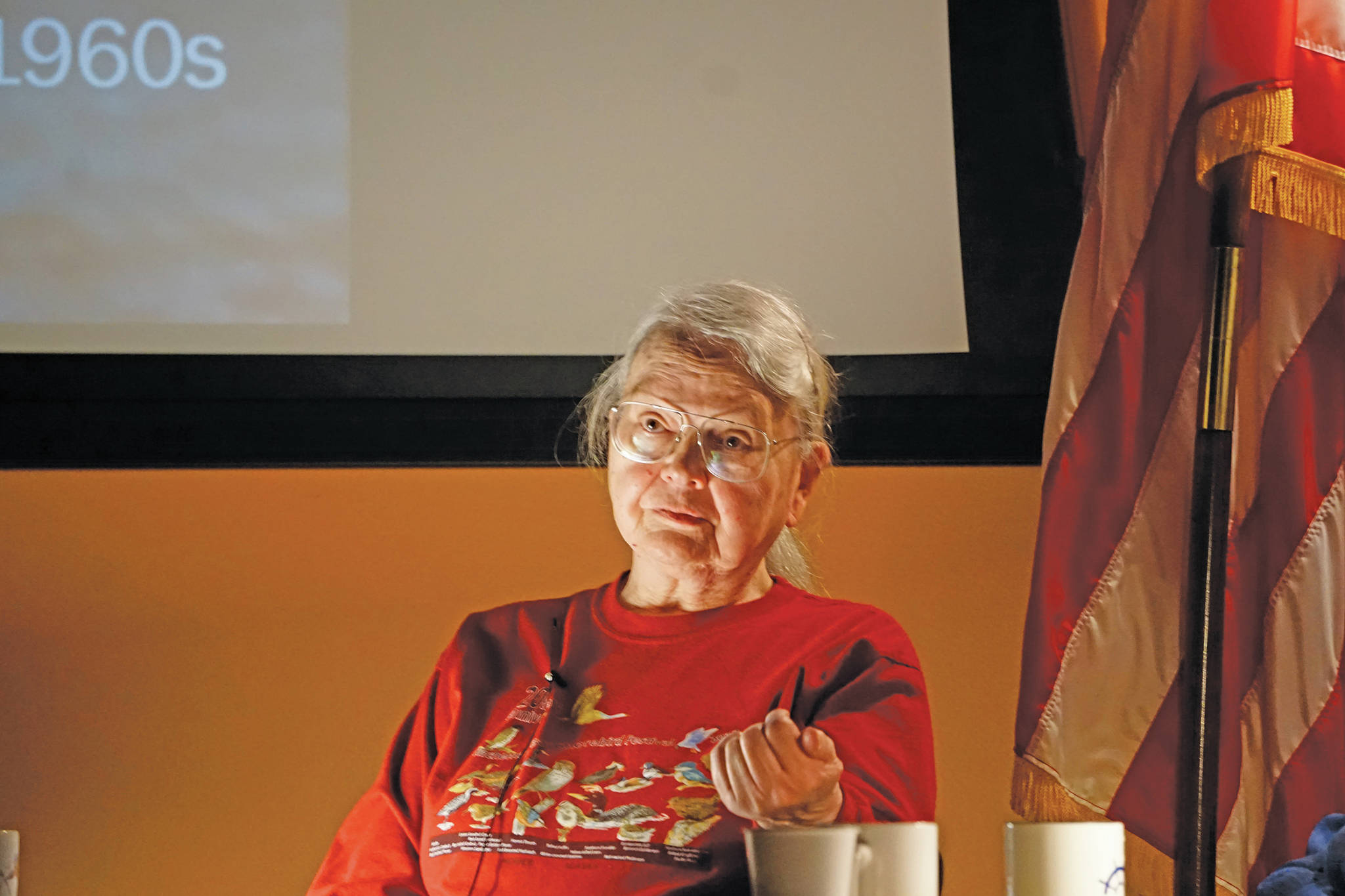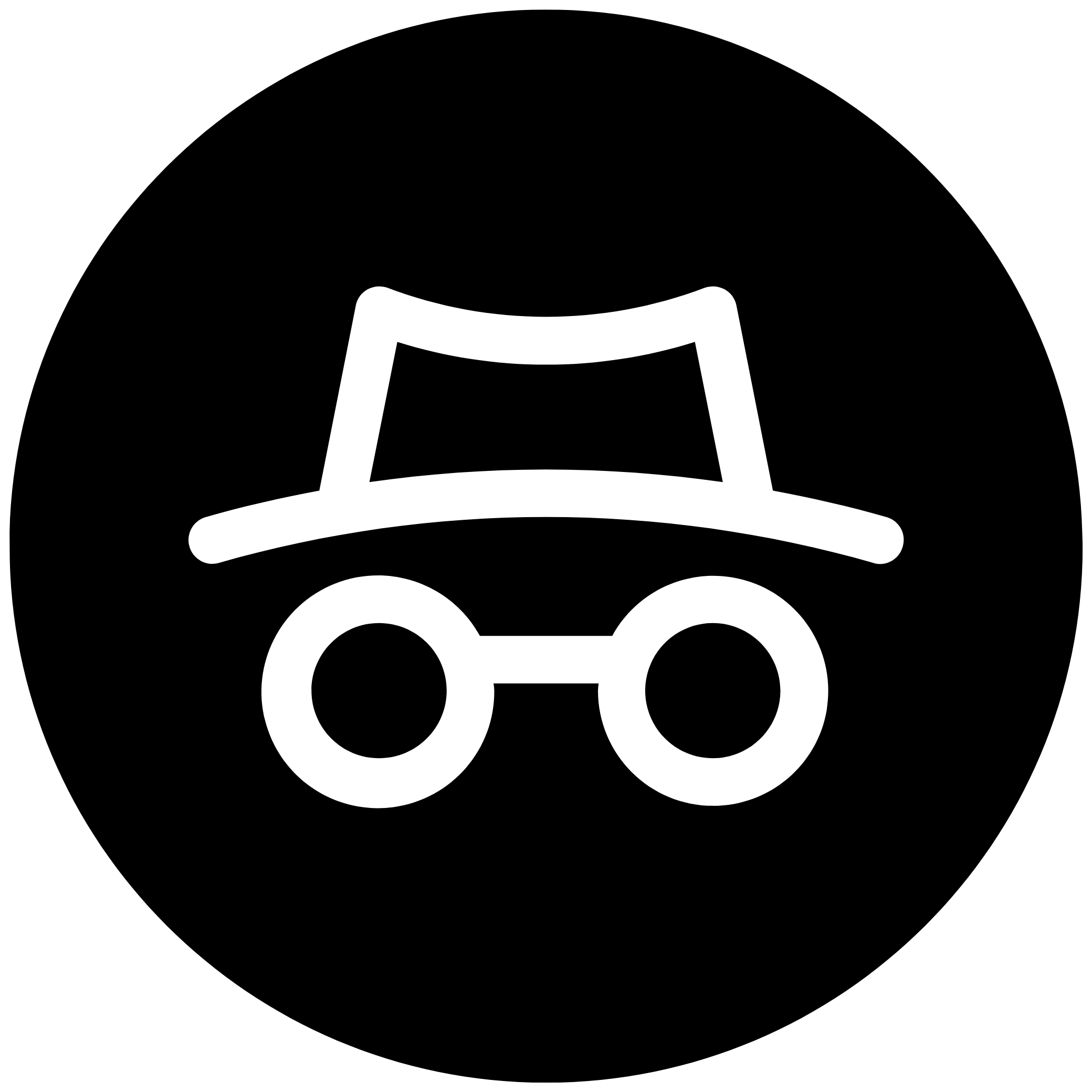The Kachemak Heritage Land Trust has as its mission protecting treasured lands, especially fish and wildlife habitat. At its annual meeting Dec. 12 at the Alaska Islands and Ocean Visitor Center, the land trust went a step further and also honored the people who make those lands special.
In “Homestead Kids 3,” the third in a series of talks held by the land trust in association with the Pratt Museum, Laura Lofgren Barton and Steve Walli talked about their different experiences as children of homestead families living in the Homer hills and on the coast. Lynn Whitmore served as emcee in the program.
“We called her ‘hillbillies’ and we were fishermen, but she called us ‘beach rats,’” Walli said, using the slang of the 1930s and 1940s.
Barton’s family, the Lofgrens, came to Alaska from Washington in the 1940s. Barton grew up on a homestead straddling both sides of Diamond Ridge just east of Hickerson Memorial Cemetery. The Lofgrens came to Diamond Ridge from the north side via Crossman Ridge and the old Homer Heights area.
“Forget Baycrest Hill,” Barton said. “No one was dreaming of it.”
Walli traces his roots on the lower Kenai Peninsula back to his great-great grandfather Henry Lindstrang, a Finnish immigrant fisherman who came to Alaska in 1892. Lindstrang fished in Cook Inlet and Homer caught his eye. Lindstrang settled in Stariski and homesteaded there. When he was a boy, Walli worked a fish trap site at Stariski. A network of poles and chicken wire guided salmon into the lead, the opening of the trap.
“The interesting thing about that was the pink salmon were on the surface; they swam clockwise,” Walli said. “…What we call the money fish, the kings and silvers, would be underneath them and they would swim counterclockwise.”
The trap could be worked so the pinks swam out and the money fish could be caught. As a boy, one of Walli’s jobs was to work the trap. The chicken wire would get tangled with kelp.
“You had to keep those clean, 24 hours a day,” Walli said. “It was labor intensive.”
Another side of Walli’s family homesteaded in Anchor Point and out East End Road. Walli was born in the Harrington Cabin, now part of the Pratt Museum’s homestead exhibit.
“My grandkids say I’m ancient because I was born in a museum,” Walli said.
With family spread out over the lower peninsula, there was only one way to get back and forth, he said.
“The beach was our road,” Walli said. “…We’d leave Stariski after high water. … We’d get there (Homer) eight hours later. You never heard me complain about road construction.”
Barton’s family got the idea to settle in Alaska after her father worked in Kodiak in 1941 helping to build a naval base. He met Homer men working there and learned about the area.
“We took a two-week vacation and came to Homer on the Alaska steamship,” she said. “…We walked all over the place. … We noticed the native grass, the green grass, grew like crazy.”
Her dad had the idea that they could raise cattle. The Lofgrens came back in June 1945. They stayed in a cabin on Crossman Ridge and then found a 12-foot-by-13-foot cabin on Diamond Ridge on a homestead that had never been proved up. In the winter Barton’s father would ski to the Diamond Ridge cabin and cut trees. Barton and her brother skied to school at the Homer Heights School above Crossman Ridge. In 1946 a road got plowed to Diamond Ridge and the Lofgrens moved into the cabin her father built. After a few bad winters, the Lofgrens switched from cattle to chickens and built a chicken house.
“The hawks thought they (the chickens) looked like dinner,” Barton said. “I remember Mom in the pen with a potato hook chasing the hawks off while my dad went to get the shotgun.”
Eventually they had 1,000 laying hens and supplied eggs all the way to Seward. That also meant a lot of eggs for meals — “scrambled eggs for lunch, fried eggs for dinner,” Barton said.
Walli’s grandfather, Carl Rosenberg, built a big store at the top of Main Street that’s now the U.S. Coast Guard offices next to NOMAR. That store became known as Mrs. Walli’s Store.
“Everything was in Seldovia when I was a kid,” Walli said. “… My grandfather wanted to build a store on what was called ‘the colony side.’”
Barton said people would go to Walli’s Store and place an order for staples. She remembered once getting a case of graham crackers, all of them stamped “Alaska!”
“They were just a little bit scorched,” she said of the crackers. “… They knew if they sent it to Alaska it wouldn’t come back.”
Whitmore asked Barton and Walli what chores they remembered doing. They said they had jobs and then they had chores. Barton worked in the henhouse, the garden and the potato fields.
“You didn’t call that half acre of potatoes a garden,” she said. “I call it a lot of hard work.”
Walli said his daily chore was “packing water every morning, two buckets of water, two buckets of coal.”
Doctors and dentists were rare in the old days. Walli said his grandfather busted his spleen in 1937 when a tree fell on him. His grandfather walked to Homer, got on a boat to Seward and then on the train to Anchorage and died on the way there.
Barton remembered her brother breaking his wrist. A doctor in Seldovia said it was a bad break and he should go to Seattle. On the way to the airport, her dad got stuck on the hill and arrived 30 minutes after the plane was supposed to leave.
“But this was Alaska and this was in the 1940s,” she said. “The plane waited half an hour for a half-fare passenger.”
A dentist, Dr. Pollard, would come down from Coho. He had a foot-pedal drill.
“He’s got to be treading at a reasonable rate,” Barton said. “If he gets distracted and slows down, that dull old drill bit catches your tooth.”
“He was about 70-years-old,” Walli said. “He runs out of steam pretty quick.”
Barton remembered how she would get three mailings of Christmas gifts because relatives Outside didn’t understand how long it took for mail to get to Alaska. The best present she ever got came from her grandmother, who had saved up a year’s worth of comic strips from the Seattle Times.
Whitmore asked Barton and Walli what they appreciated most about their homesteading childhoods.
“Freedom,” Walli said. “As a kid there, that’s the biggest thing I miss now. We had a lot of freedom.”
Barton agreed, but there also was something else.
“As a family, we were a unit,” she said. “Our parents were always leading us off. It was a real camaraderie. We knew we were needed. We knew we were loved. If two people were missing, two people couldn’t feed all those chickens.”
Reach Michael Armstrong at marmstrong@homernews.com.


